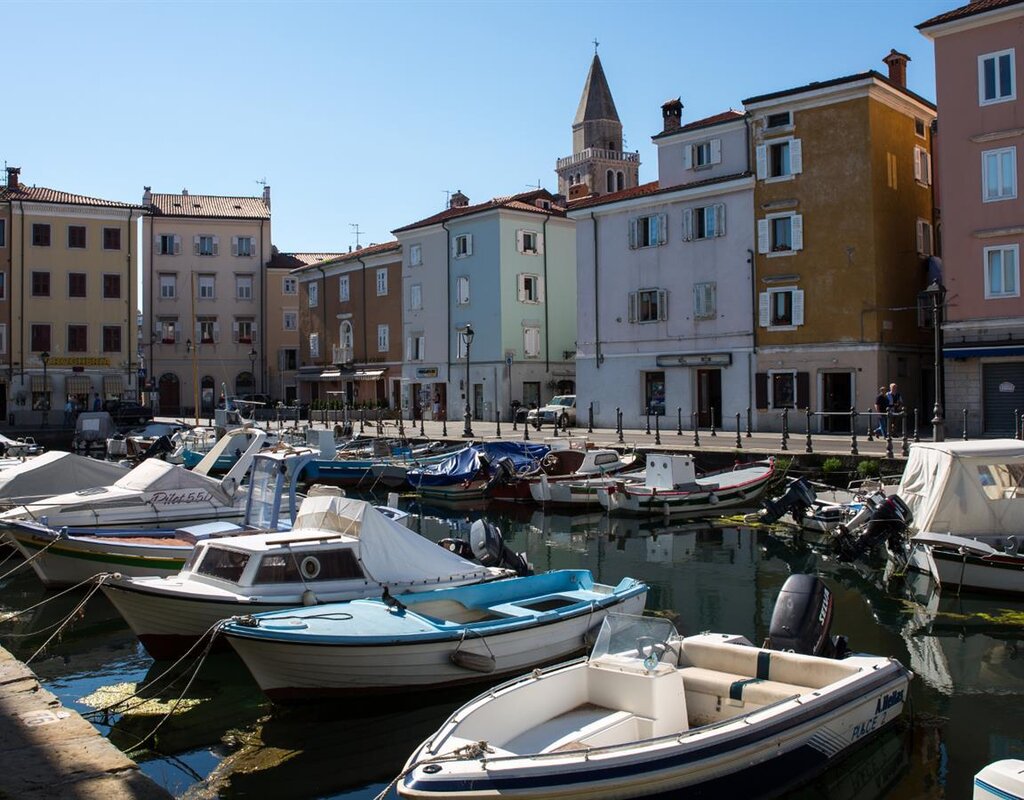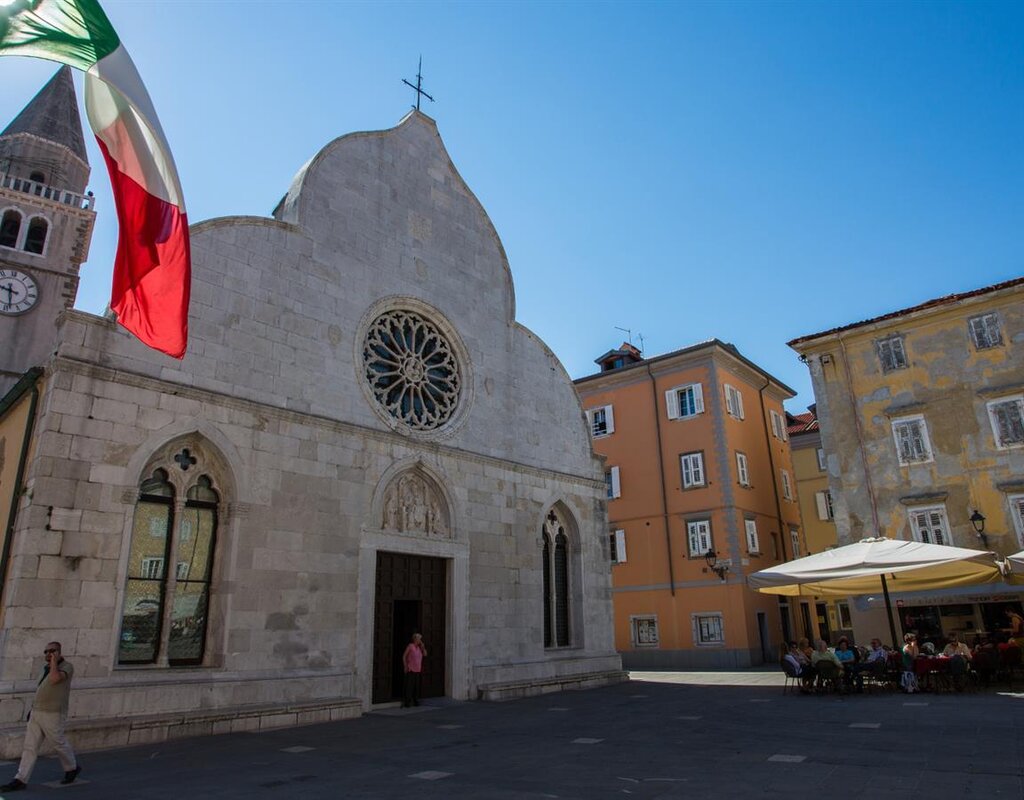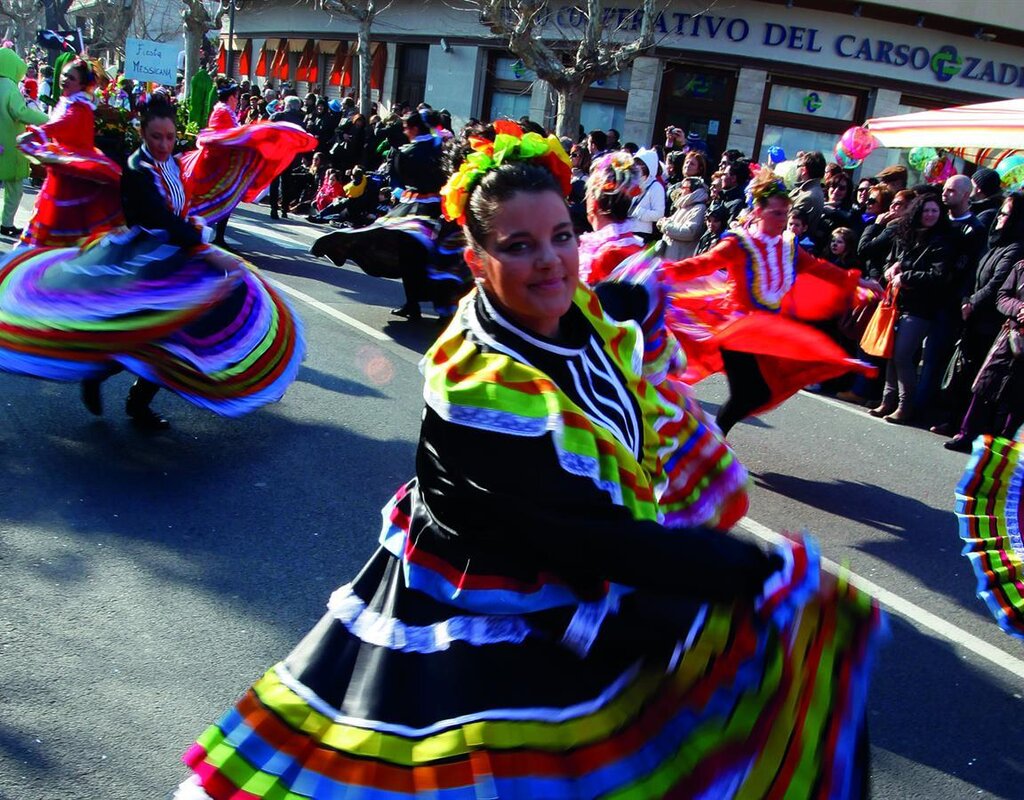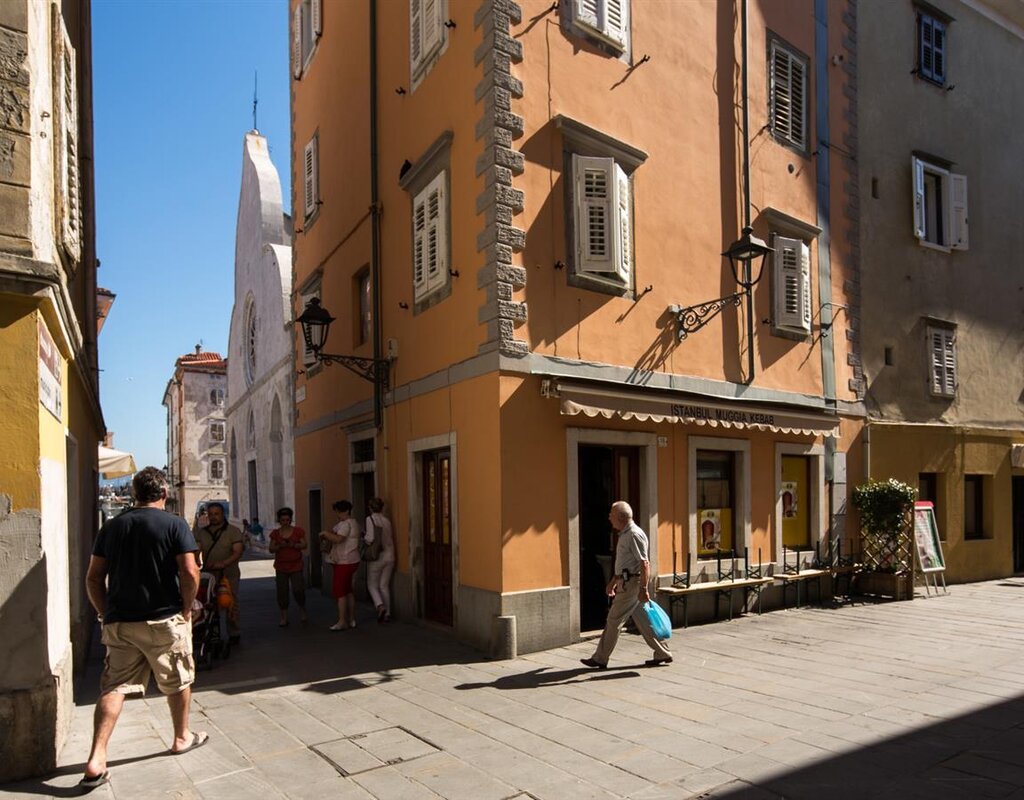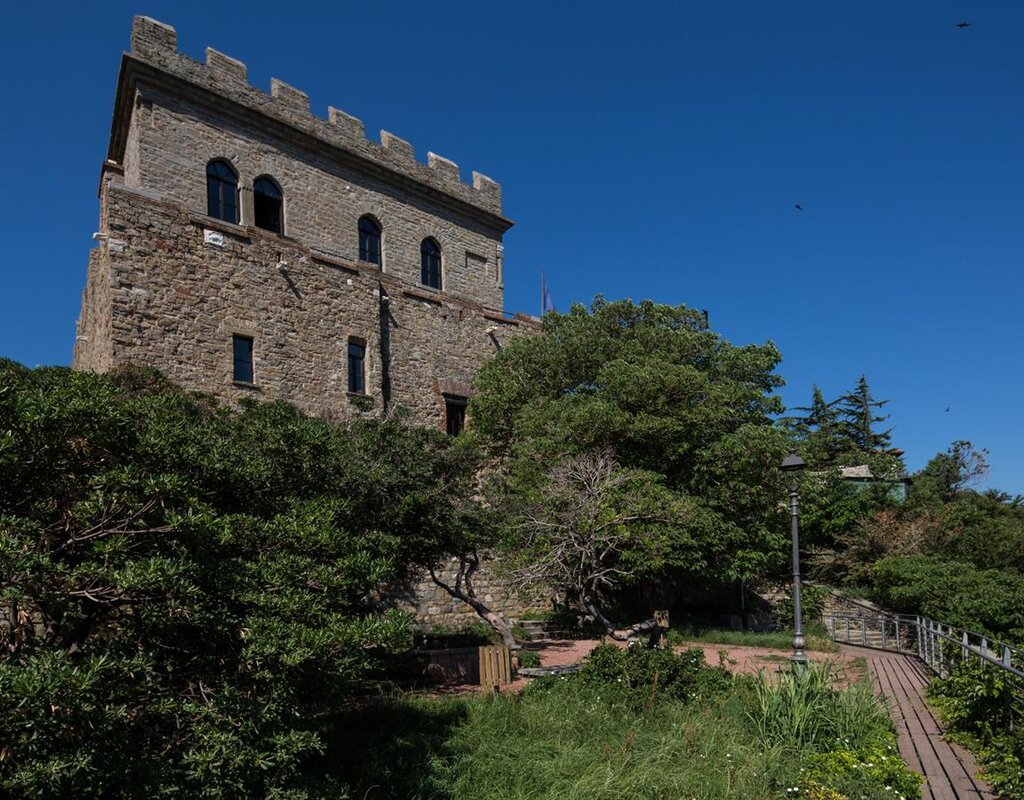Kje:
Muggia
Milje
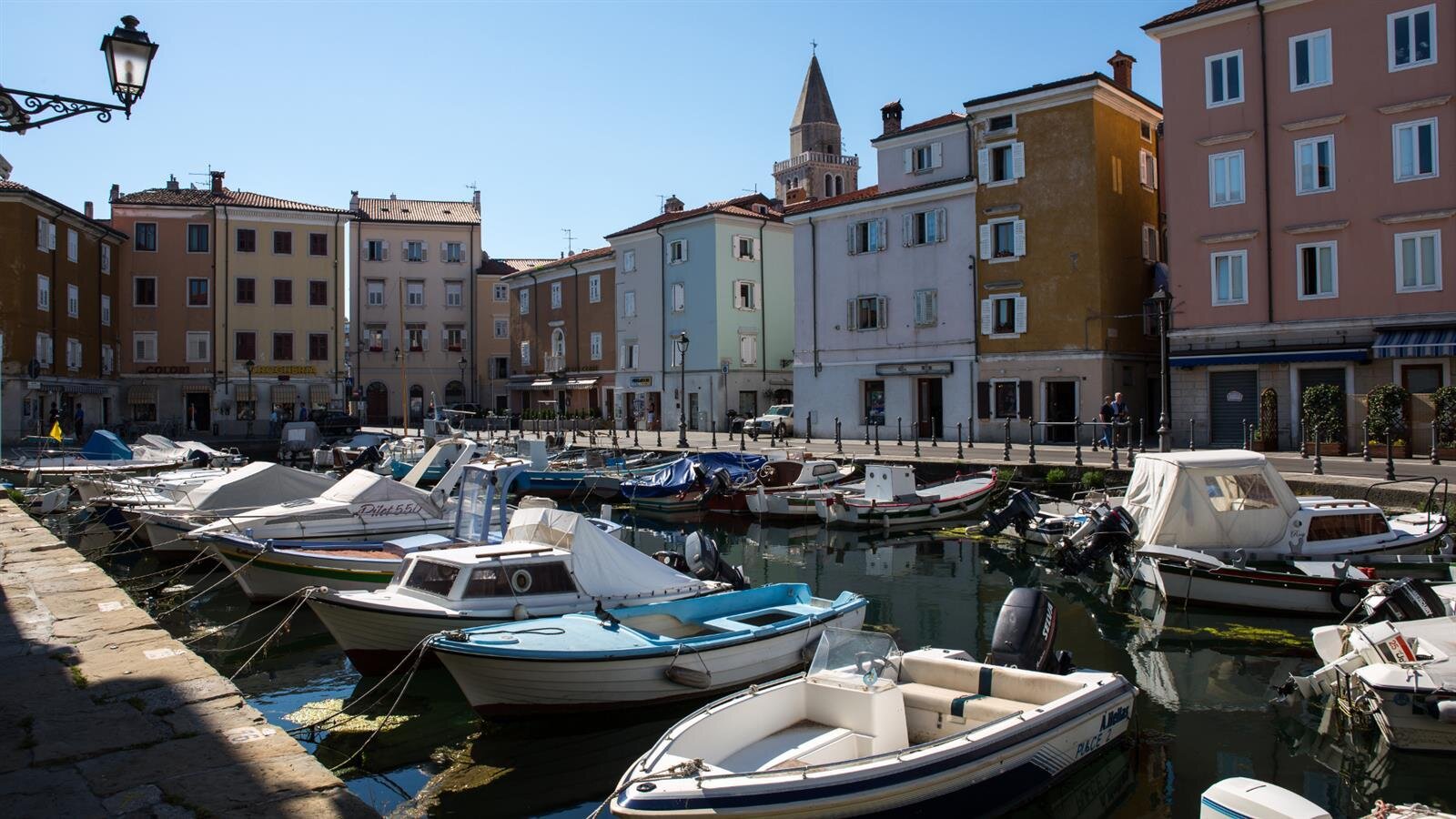
Raziščite vas v istrsko-benečanskem slogu: Miljski zaliv, slikovita ladjedelnica ter arhitektura v beneškem slogu in vzdušju.
The village with Istrian-Venetian features In the last stretch of Italy, the coast seems to fall back on itself, and this is where Muggia Bay lies, a typical Istrian-Venetian resort. When you dock at the picturesque harbour, it will almost seem as if you are entering the narrow Venetian lanes and small squares. The Venetian atmosphere is not only inspired by the architecture; the dialect, customs, and gastronomic traditions reveal an intense past shared with the Most Serene Republic of Venice. If you look at Muggia from the sea, the white Istrian stones and the colourful houses create a harmonious whole with the green Karst environment. It is framed by seven kilometres of coastline and a range of hills that dominate a vast Italian and Istrian area.Just before the year 1000, a small town called Borgolauro developed in the valley at the marina; the Municipality of Muggia stemmed from this new village in the thirteenth century. The cathedral and town hall, which were rebuilt in the twentieth century, are from that era. However, up on the headland that overlooks the harbour, there is evidence of an even older history: the remains of the protohistoric castellieri (fortified boroughs) of Santa Barbara and Muggia Vecchia, where the Romanesque Basilica of Muggia Vecchia (9th century) stands as the only testament, together with the remains of the walls, of a Roman and medieval past. From here, you can enjoy a wonderful view of the Gulf of Trieste. Muggia Castle dates back to the 14th century, although it has been restructured several times over the centuries and once dominated the defensive circle of walls around the town. Interestingly enough, Muggia’s inhabitants used its original sandstone blocks to build their homes. Even today, this small town boasts a unique atmosphere when you stroll through the narrow Venetian-style lanes and the beautiful Piazza Marconi, the pulsating heart of the town, or stop at the Mandracchio to watch the fishermen at work.
Do not miss out on the Muggia Carnival, or “Carneval de Muja”, whose classical and traditional Venetian origins mix with influences from the Istrian peninsula; an amazing show which includes colourful floats and masks each year.
Mesto z istrsko-beneškim obrazom
Na zadnjem obronku Italije se zdi, da se obala obrača sama vase: tu se odpira miljski zaliv, značilno mestece z istrsko-beneškim obrazom. Ko prispemo do slikovitega pristanišča, se počutimo, kot da bi vstopili v beneške “calli” in “piazze”. Beneško vzdušje ni razvidno le iz arhitekture: tudi narečje, običaji in gastronomske tradicije razkrivajo bogato preteklost, ki jo mesto deli z Beneško republiko. Če pogledamo na Milje z morja, beli istrski kamni in pisane hiše tvorijo harmonično celoto z zelenim kraškim okoljem. Območje uokvirja sedem kilometrov obale in venec gričev, ki gledajo na obsežno območje, tako italijansko kot istrsko.
Pred letom 1000 se je dolvodno, v majhnem pristanišču, razvilo manjše središče, ki se je imenovalo Borgolauro: v 13. stoletju se je v tej novi vasi rodila občina Milje. Iz tega obdobja izhajata katedrala in občinska palača, obnovljena v 20. stoletju. Višje, na območju nad pristaniščem, so sledovi še bolj antične zgodovine: dokaz za to so ostanki prazgodovinskih utrjenih četrti Santa Barbara in starega dela Milj, kjer stoji romanska bazilika Muggia Vecchia (9. stoletje), ki je skupaj z ostanki obzidja edini dokaz rimske in srednjeveške preteklosti. Od tu se odpira čudovit razgled na Tržaški zaliv. Miljski grad pa izvira iz 14. stoletja, čeprav je bil skozi stoletja večkrat predelan.
Nekoč je bil del utrjenega obzidja okoli mesta. Zanimivo je, da so prebivalci Milj za gradnjo svojih hiš uporabljali njegov prvotni peščenjak. Še danes lahko v tem mestu dihate poseben zrak, se sprehajate po značilnih ulicah in čudovitem trgu Marconi, ki je utripajoče srce mesta, ali se ustavite v Mandracchiu in opazujete ribiče pri delu.
Ne zamudite miljskega pusta oz. "Carneval de Muja", ki ima korenine v beneški tradiciji in vplive istrskega polotoka: velik spektakel, ki vsako leto vključuje alegorične vozove in pisane maske.
